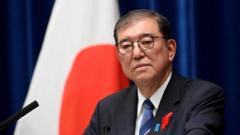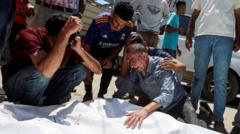In a historic move, WHO members have agreed to a legally binding treaty aimed at improving responses to future pandemics, emphasizing data sharing and equitable resource distribution.
Groundbreaking Pandemic Treaty Reached by WHO

Groundbreaking Pandemic Treaty Reached by WHO
The World Health Organization finalizes a legally binding treaty to enhance global pandemic preparedness.
The World Health Organization (WHO) has recently finalized the text of a legally binding treaty intended to strengthen the global response to pandemics. This landmark agreement, which addresses the notable disarray and competitive resource struggles experienced during the COVID-19 crisis, aims to foster collaboration among nations.
Key aspects of the treaty include the expedited sharing of data regarding emerging diseases to expedite the development of necessary treatments and vaccines by pharmaceutical companies and scientists. For the first time, the WHO will monitor global supply chains for essential materials such as masks and personal protective equipment (PPE), ensuring a coordinated response in times of crisis.
Dr. Tedros Adhanom Ghebreyesus, WHO director-general, hailed the deal as a crucial step toward a more secure world, stating, "Member states have proven that multilateralism is not only alive but essential in addressing our collective challenges."
This treaty, reached after three years of negotiations, is only the second of its kind in the WHO's 75-year existence, following a tobacco control agreement established in 2003. However, the pact must be officially endorsed during the upcoming World Health Assembly.
Notably, U.S. representatives were absent from the final discussions following President Donald Trump's decision to withdraw from the WHO, which means the U.S. will not be bound by the treaty upon its exit in 2026.
Under the terms of the agreement, countries are required to ensure the availability of pandemic-related pharmaceuticals during future outbreaks. Manufacturers will be expected to allocate 20% of their productions of vaccines, therapeutics, and diagnostics to the WHO, with a minimum of 10% to be provided as donations and the remainder accessible at affordable prices.
Additionally, the treaty promotes the transfer of health technologies to low-income nations on mutually agreed conditions, facilitating increased local vaccine and medicine production during pandemics. However, this clause has sparked significant contention, particularly among developing countries that feel aggrieved after witnessing the hoarding of vaccines by wealthier nations during the COVID-19 pandemic.
At the heart of the pact is a proposed Pathogen Access and Benefit-Sharing System (PABS), aiming to foster swift data exchange among pharmaceutical companies to expedite drug development in future health crises.






















